How to Homeschool Multiple Ages: with 10 Tips.
How to Homeschool Multiple Ages
- Have habits in place.
- Set the atmosphere of learning.
- Keep lessons short.
- Combine subjects when appropriate/ possible.
- Alternate days with each child.
- Troubleshoot areas of friction.
- Individual work while implementing masterly inactivity.
- Flip-Flop schedules if needed.
- Siblings helping siblings.
- Be flexible and reevaluate when needed.
Keep Reading further to understand what I mean by each of these tips.
Where we started our Homeschool Journey
My husband and I are second-generation homeschoolers.
Apparently, though, I had told my mother that I would NEVER homeschool my children. I don’t remember that, but she does. And really, we both didn’t plan on homeschooling our children. Our oldest, at the time was 4 when she entered the public school system. She would soon turn 5 but was put in as a TK Kindergartener. (Transitional Kindergarten) Our second-born daughter was attending a Montessori-type preschool as I waddled between drop-offs and pick-ups, pregnant with our third child.
Our daughters would cry that they missed us, or each other. Or be sad that they sit all day, don’t get to be outside or were feeling pressured to read. These issues along with the daily drop off and pick up schedules, (that didn’t complement each other) made me wonder how we would balance it with a newborn. How could I get our coming son down for nap times when I had to be driving every 1 1/2 hours?
Please note that this post may contain affiliate links. As an Amazon Associate, I may earn commissions from qualifying purchases, at no additional cost to you. Thank you for supporting our family in this way.

Saving Their Childhood, and Haven’t Looked Back
We talked as a family and decided we wanted to bring the kids home at the end of the school year. We wanted our children to have a low-stress childhood where they could play for hours, like me and my husband remembered doing. That was in 2016 and we have created a wonderful lifestyle of learning through the Charlotte Mason method/ philosophy since then.
We are now a family of 6: having a 12-year-old girl in 6th grade, a 10-year-old girl in 4th grade, a 6-year-old boy in 1st grade, and a 3-year-old girl that keeps us moving. (Don’t all 3-year-old kids do this? Such a busy age.)
So I can empathize with the challenge of having children of different ages to teach.
First of all, if you are overwhelmed, you may be trying to do more than you can right now. Take some time to evaluate what’s happening in your family. If there have been large transitions or major child development milestones, I suggest pairing down till there is peace. Lots of homeschooling moms have told me to just trust the process and go slow and steady! Let me be the one to tell you the same, we have a long way to go, and a little bit every day is the best way to tackle school time.
A book that is a great encouragement is Teaching from Rest by Sarah Mackenzie of the Read Aloud Revival. It’s a quick read. (Or a short listen on Audible.)
With large family homeschooling, we really are a one-room schoolhouse. We often have young kids and older kids, maybe some in high school. All these different grade levels have different needs and I want to help you succeed in your homeschool day.
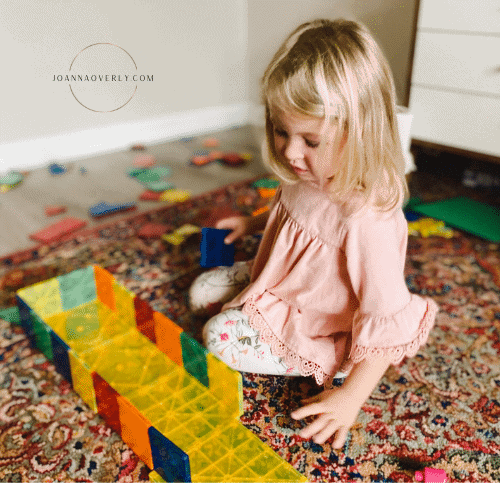
Expounding on the 10 Tips for How to Homeschool Multiple Ages
#1 Charlotte Mason believed it is very much worth the work to train habits.
“The mother who takes pains to endow her children with good habits secures for herself smooth and easy days.”
(If you want to read more specifically about how to train habits, check out this free ebook from Simply Charlotte Mason.)
If you are coming straight out of public school, take some time to “deschool”, while working on habits as well.
What habits would be most helpful will be determined by your family situation. Miss Mason’s top two suggestions are the habits of attention and obedience.
Beyond that think, “what would help our days go smoothly?’
Maybe for your younger children, it would be helpful if they can tie their own shoes, or unload the dishwasher. Perhaps it’s having the younger kids able to have quiet time on their own, or that the older siblings have a few independent learning subjects. There are so many habits to choose from but take some time and think it over for each individual child. (And maybe, yourself too!)
Mag genius magnet tiles on Amazon
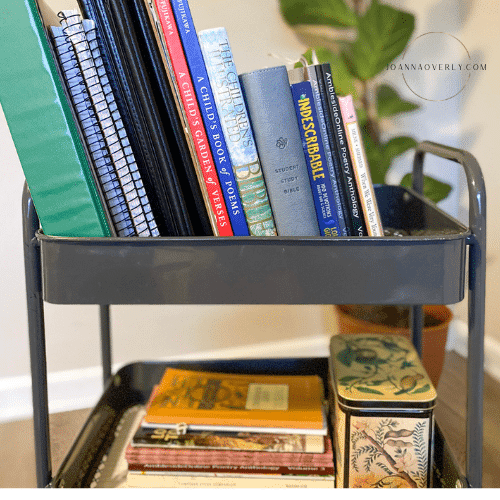
#2 To set the atmosphere of learning, we must be prepared.
Detailed lesson plans should be printed and easy to access, I keep mine in my homeschool planner. Books and curriculum are best stored at the children’s level, so they can access them on their own. Math manipulatives, on the other hand, I like to store them in a place where the toddler won’t be dumping them out every day. You live, you learn… To see how I schedule our days, check out my post on How to Schedule Ambleside Online here.
Links to items in our morning time cart:
Indescribable: 100 Devotions for Kids About God and Science
Child’s Own Book of Great Musicians
Transparent Restaurant Menu Covers
#3 By keeping lessons short we are building on a Charlotte Mason principle that helps keep things fresh and moving.
Attention spans are short for young children and I don’t suggest 45-minute math lessons for a 6-year-old child. It also is refreshing for older children to have a variety of subjects to explore. Brandy Vencel shares more on this topic in this blog post.

#4 Combing subjects is so helpful when you homeschool multiple ages with a Charlotte Mason education.
It also helps build common knowledge within our whole family. We combine all of our “riches” into group work in our morning time, as well as Bible, state history, and books for the co-ops we are involved in. If you’d like to see more about our morning time schedule for this past year, you can see it here. (As well as get some free printables.)
#5 Alternating days with each child based on their needs and capabilities.
Younger students do need you for pretty much all of their school work. But setting up 1 or 2 days a week to dive deeper with older students helps spread out my mental workload of me as a homeschool parent.
For example, I have three students. My oldest child who is in 6th grade is fairly independent. Our 4th grader needs some help and direction with readings, and my kindergartener needs me daily. I schedule my more independent child to meet with me 2 days a week. Then 3 days a week I work more in-depth with my child who needs more direction/ help with readings. I plan our tougher subjects/ readings for the days I am with those children. My youngest student (but not my youngest child) is the one who needs consistent help and I work with that child every day.
This helps give structure to our daily routine. I start with my youngest student at the kitchen table doing language arts and math lessons, while my older children do independent work. (Usually copy work, a math lesson, and some of their selected readings.) Then we gather in the living room for our morning time routine. After our morning time, I do one on one work with my older daughter who is in middle school, on Mondays. Having a set time, or day of the week to go over this child’s needs helps her plan the rest of her week at her own pace.
The day of the week isn’t always a set day, sometimes one older child needs help on a new math concept and even if it isn’t “their day”, I always help answer questions. Sometimes it just means saying, “please let me finish this with the little kids before I can get to that.”

#6 Troubleshoot areas of friction.
I know it may seem obvious, but sometimes it helps to have someone point it out. That if something isn’t working, deconstruct the issue. Work backward. If the issue is something simple like no one can ever find a pencil when it is time to begin, have a container of sharpened pencils with your notebooks/ workbooks.
If the issue is a larger problem, say, for example, your skipping math entirely because it is too teacher intensive then, by all means, find something that will better suit your family. There is no lack of curriculum in the world today, even resell sites can make some options more affordable.
Get creative in solving problems that arise.
Links to items in our nature/bookshelf:
Multiplication Facts That Stick

#7 Individual work while implementing masterly inactivity.
We, as mothers, should not be lazy when we approach the training of our children’s minds. And as a mother of multiples, I doubt anyone has ever accused you of being lazy since there is always so much to be done! One of the best habits we can form in ourselves when we homeschool multiple ages is to cultivate masterly inactivity.
What is masterly inactivity? Again I will direct you toward Brandy Vencel’s blog Afterthoughts where she says, “Masterly inactivity is often called “wise letting-alone” — it’s where Mom intervenes less (without being negligent), allowing the child’s actions to have direct consequences.”
I put this into practice when I said earlier that I have more one on one time with my more independent children less frequently. And even though we do more subjects together on our “meeting days”, it doesn’t mean I am not paying attention to their daily progress.
I used to think I had to be able to preread every book before I could hand it to my children. Or filter through every topic to then spoon-feed them the information. That ended quickly. I could not keep up, I could not contain all the learning that there is for them. If I tried, I would be slowing them down. I’m not saying do not be mindful of what you give them to learn, but I am saying, let them learn! Let them know things that you know nothing of and be fascinated by what they share with you.
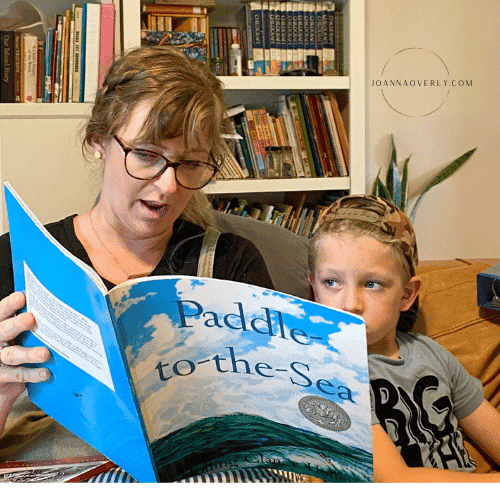
#8 Flip-Flop schedules if needed.
Early on in my homeschooling journey, I had many wise veteran mama friends. My friend Jessica homeschooled 3 older children while having a toddler at the time, and she would flip-flop their days! Whereas many people want to get their schoolwork done right in the morning, they would do chores, and outings and have free time in the morning. This allowed them to fill up the toddler’s “love bucket” and then in the afternoon during nap time, they did most of their lessons.
We adopted this way of learning for many years. Because otherwise we were often trying to distract the toddler so we could do our studies, and honestly, it was frustrating for all of us.
#9 When you homeschool multiple ages siblings can help siblings.
The beauty of large families is that you never have to be alone if you don’t want to be. If you have an emerging reader that needs to practice reading daily, have them read to a younger sibling. This takes the pressure off the reader because the younger sibling (probably) won’t be correcting them. And it helps the younger child to feel included.
Take this same example and apply it in many different ways to fit your family. We, mamas, don’t need to do it all!
#10 Be flexible and reevaluate when needed.
Last, of all, know that it is ok to change things. Sometimes we hold on to an old model of what worked before, trying to make it work again in a new season. Life isn’t static, most of our lives are full to the brim. I try to hold our plans firm but open to the Lord’s direction.
Let go of the fear of missing out or the fear that you aren’t doing enough. Learning is a life! This is a marathon, not a sprint. What gaps we may leave in a certain period of time, can be covered in another season. The Lord has been gracious to us by bringing in others to help cover areas that I can not do on my own. I believe he can do this also for you as you homeschool multiple ages.
I hope you got some good ideas to help you homeschool multiple ages here today! If you’d like to see how we implement a Charlotte Mason education into our home you can see read more here: Homeschool Morning Time Menus with Free Printables
How to Schedule Ambleside Online: How to Make it Work
Nature Journaling Supplies: What You Need in Your Bag Now
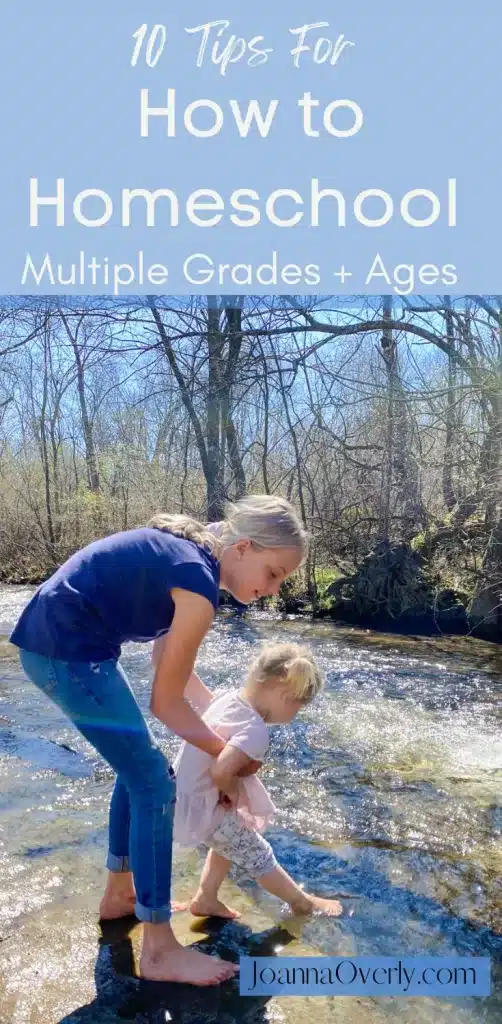


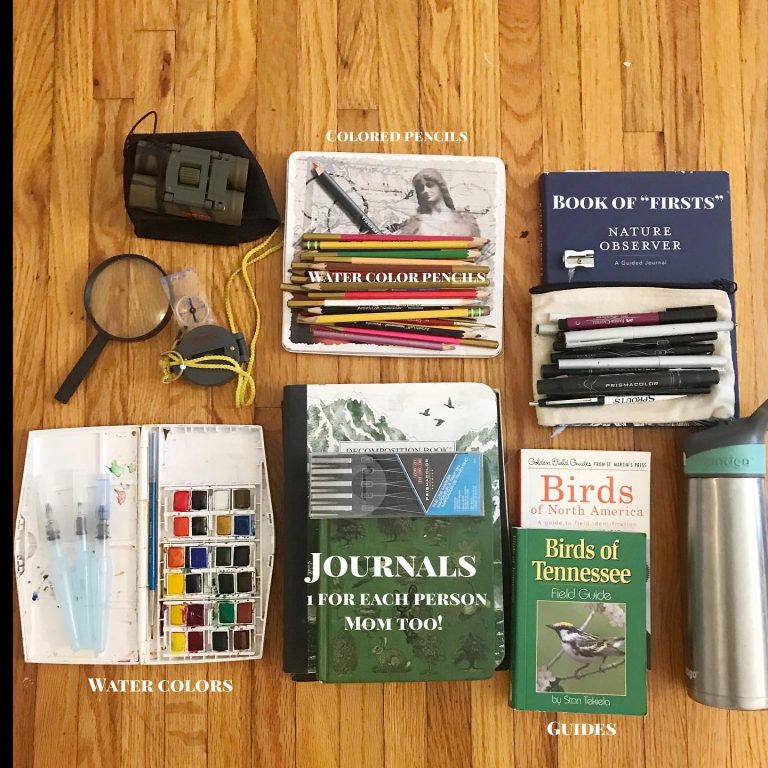
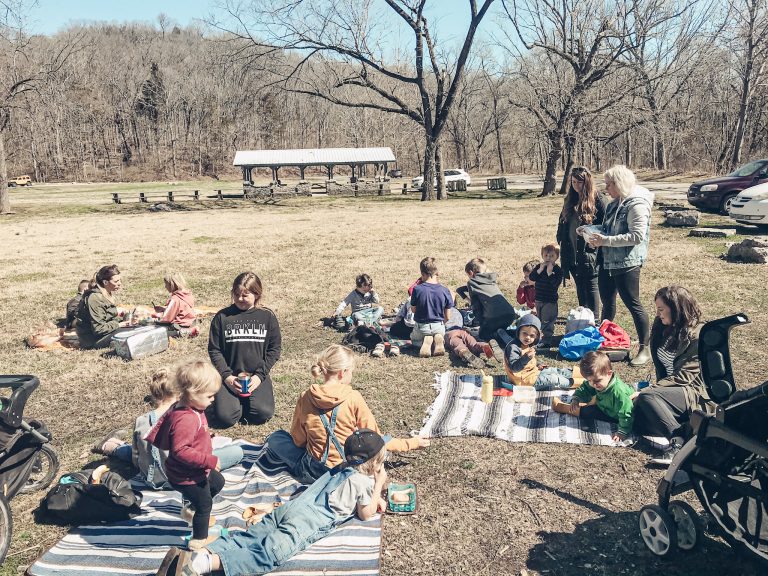
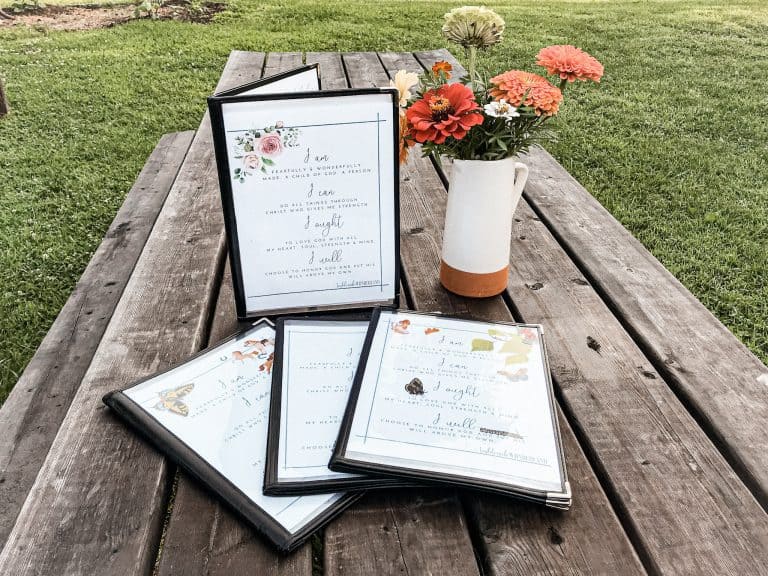
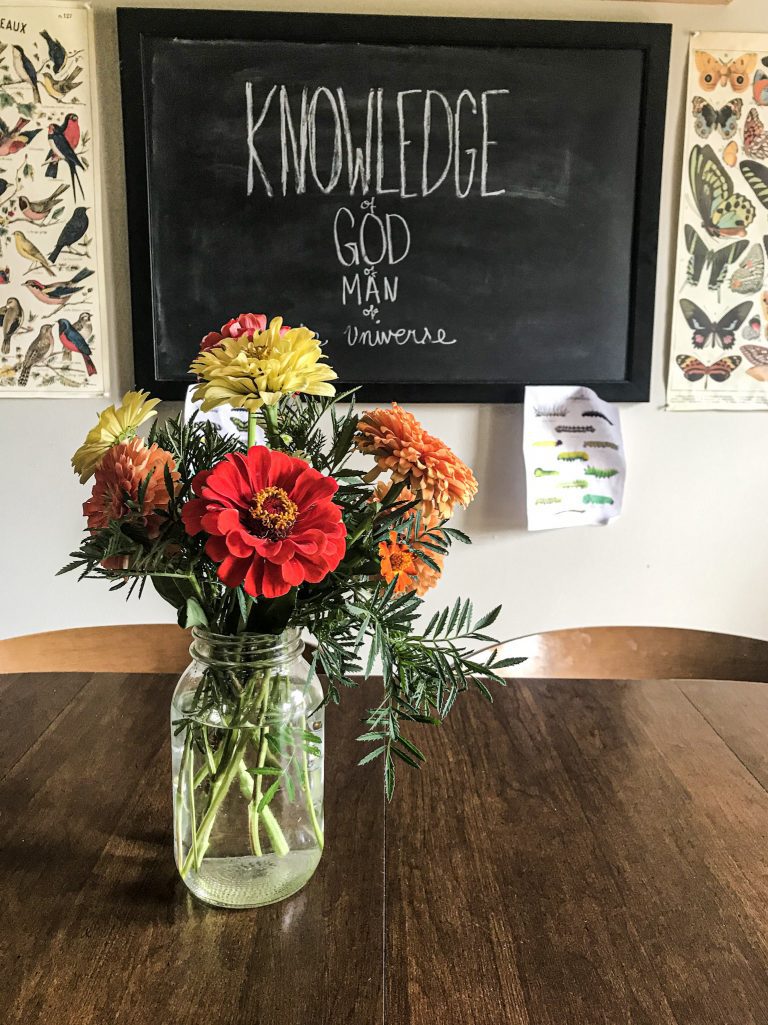
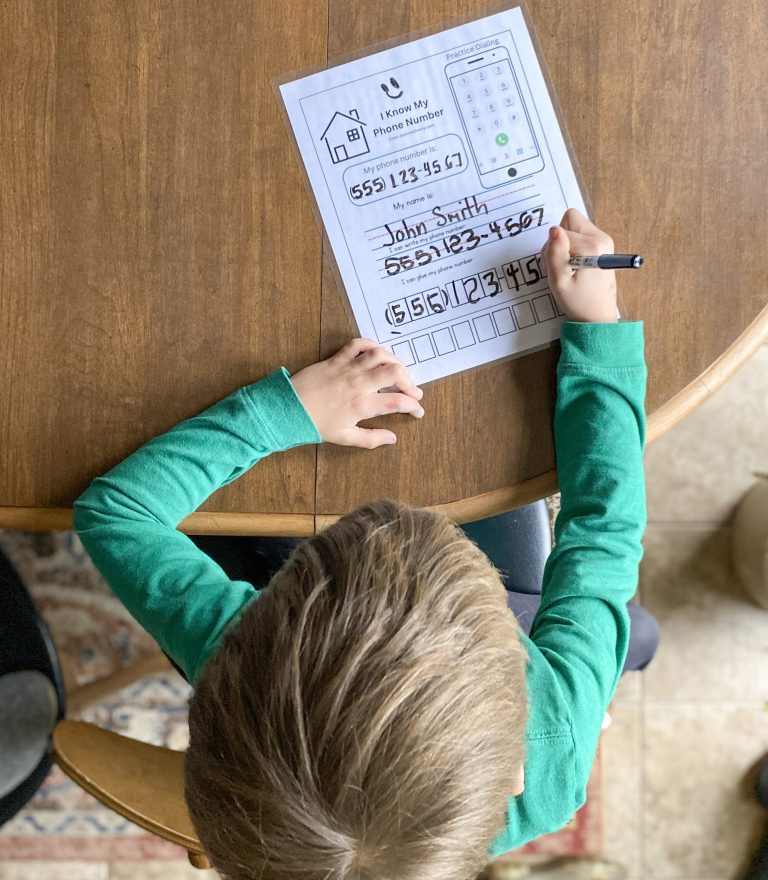
This is so helpful to read, Joanna, as I look at starting “formally” homeschooling our oldest in the fall this year. I was excited to see you do Charlotte Mason as I’ve only become acquainted with her in the last year as I started to seriously consider homeschooling and none of my own friends who homeschool follow her philosophy of education. I’m looking forward to delving deeper into your resources as such a homeschool veteran. I was not homeschooled (in fact, I graduated with Ben and remember when he joined my high school!) and it still feels really daunting to me to try to do it here in the UK where fewer people do and where we’ll really stand out from our friends But my hubby and I are pretty sure that it’s what’s going to be best for our girls for the foreseeable… So I’m researching my little heart out and love this practical guide to envision our days. Thanks!
Oh Leah I’m so glad it could be helpful to you! Charlotte Mason was from England and you have to look up Leah Boden, she is Modern Miss Mason on all socials! (She also just released a book by the same name which I am sure is top-notch.) I remember when I first imagined what I wanted for our homeschool to be like, there was so much I envisioned but didn’t have words for but felt I was going to have to make it up along the way. Then, I was introduced to Charlotte Mason’s works and was so relieved to find extensive work had already been done! We just get to glean from all the wisdom the Lord revealed to her. I’m so excited that you get to go on this journey as well 🙂
Thank you, lovely! I’ll have a look at Leah Boden’s stuff. I actually visited Ambleside in the Lake District last summer, where Charlotte Mason was from– geeking out a little bit!
That’s a dream to be able to visit! That’s so wonderful you got to go!
I’m realizing you started homeschooling the year we met and moved to Redding! This is chalk full of great ideas and resources! We will be transitioning to some of kiddos homeschooling in Fall! Thanks for all the tips
I was wondering if you’d have more than one home this fall! I answered your Marco and I think that was one of the questions I had for you. I’m glad this post can help friend! Keep messaging me with questions as they come up 🙂